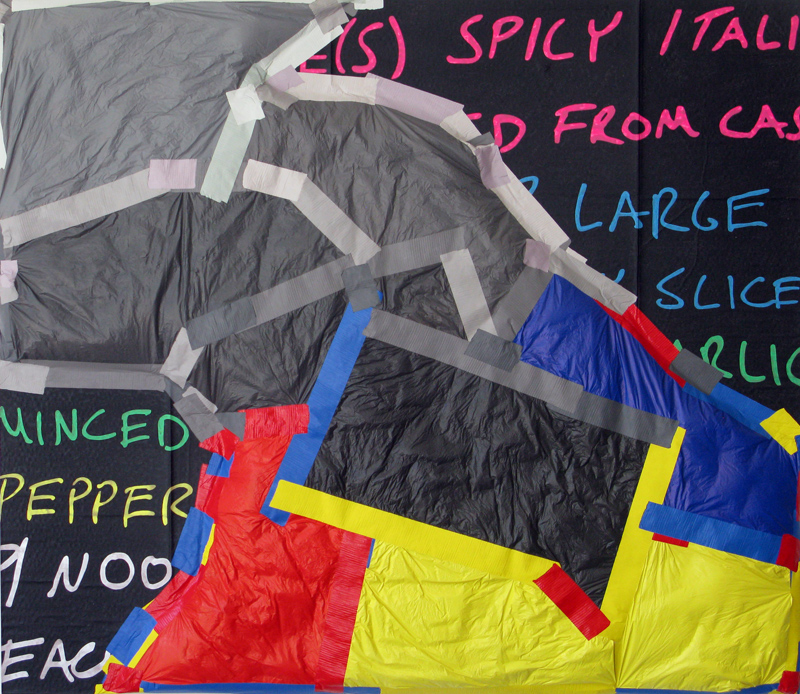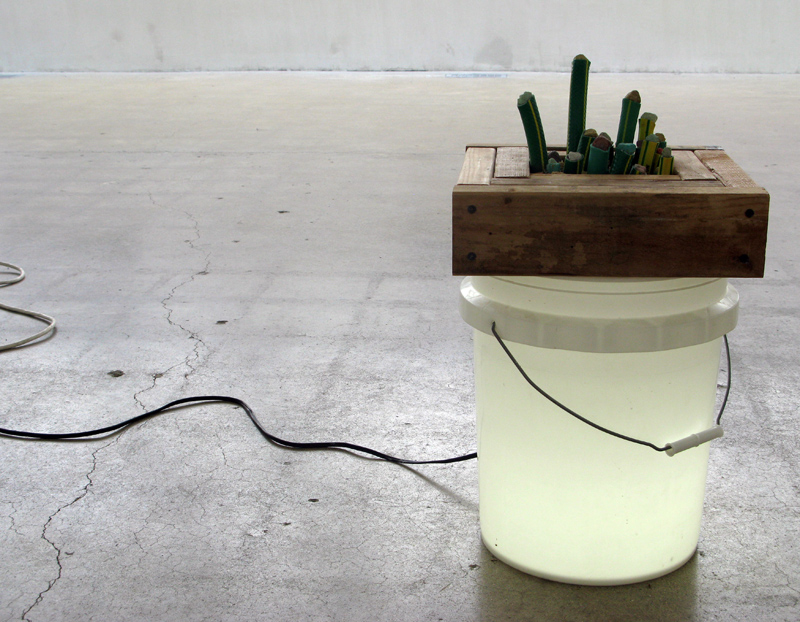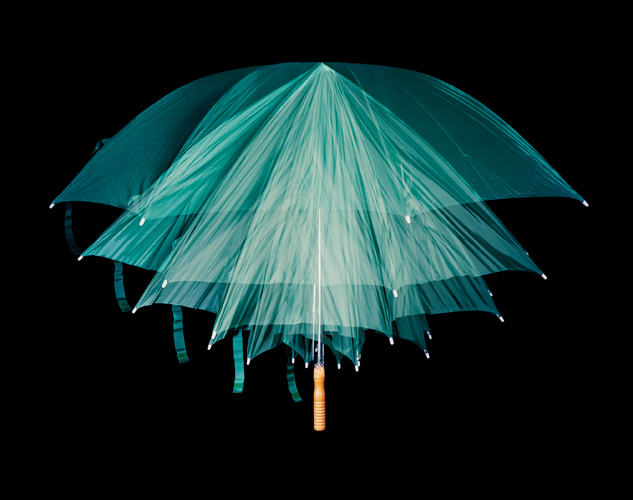
“In Bloom” at the Susanne Hilberry Gallery
You’ll find no flowers when you visit the Susanne Hilberry Gallery to see “In Bloom,” the four-person show on view there until August 6. Not real ones, anyway. There’s a Styrofoam box full of artificial flowers, watered fruitlessly by a half-hearted burble. And there’s an abundant sense of growing and blooming in much of the rest of the work. But almost none of it is natural growth; the work resolutely inhabits the realm of the artificial, only peeking out to see the natural world from inside material culture. Comprised largely of detritus from the consumerist machine that has come to constitute our environment, the work can only ever refer to nature, though natural ghosts insistently haunt the periphery.
Art referring to nature, of course, is nothing new. What is relatively new, the work suggests, is how very natural the artificial has become. In a 2008 review of work by Ivin Ballen, an artist in the show whose pieces include painted trompe l’oeil representations of duct tape and plastic bags, Lynn Crawford makes a surprising comparison to the mid-19th century landscapes of the Hudson River School. But it makes sense; those artists represented the natural environment as they experienced it. For Ballen, today, duct tape and garbage bags are the environment.
More explicitly, Dylan Spaysky’s use of artificial flowers is a compelling, double imitation of natural life. Fake flowers are already representations of the natural world; by recontextualizing them as art, Spayksy adds yet another layer of artifice. The Hudson River School gave us “landscapes,” once removed. In “untitled (fountain),” Spaysky gives us “flowers,” twice removed, their ironic, automated watering only emphasizing their utter lifelessness. (The coffin-like Styrofoam box helps, too.)
A bit more playful are three pieces by Phoebe Washburn, who’s known for her room-sized installations made from found materials. (These three are much smaller.) “Nunderwater Communications Light (White)” presents several segments of a cut up hose emerging like underwater plant life from a wooden box. The box sits on top of an illuminated white bucket, suggesting that the artificial light is somehow fueling the growth of the “plants” from below. Washburn has referred to her work as “spectacles of environments,” and I got the sense from her pieces here that she delights in her ability to mimic natural forms in new ways with everyday, man-made objects.
On one wall of the spacious, light-filled gallery, elegant photographs by Brian Mahoney depict three different colored umbrellas in bloom. Each jellyfish-like umbrella is in several distinct, but blurring, stages of being opened at once, in a way that the unaided human eye could never quite perceive. They’re beautiful studies of inanimate objects in motion, a contradiction right at home in a show that challenges you, vividly, to see the world in new ways.
“In Bloom” is on view until August 6, 2011. The Susanne Hilberry Gallery is located at 700 Livernois, Ferndale; 248-541-4700; susannehilberrygallery.com.
Recent Content
-
Artsarticle ·
-
Artsarticle ·
-
Artsarticle ·





